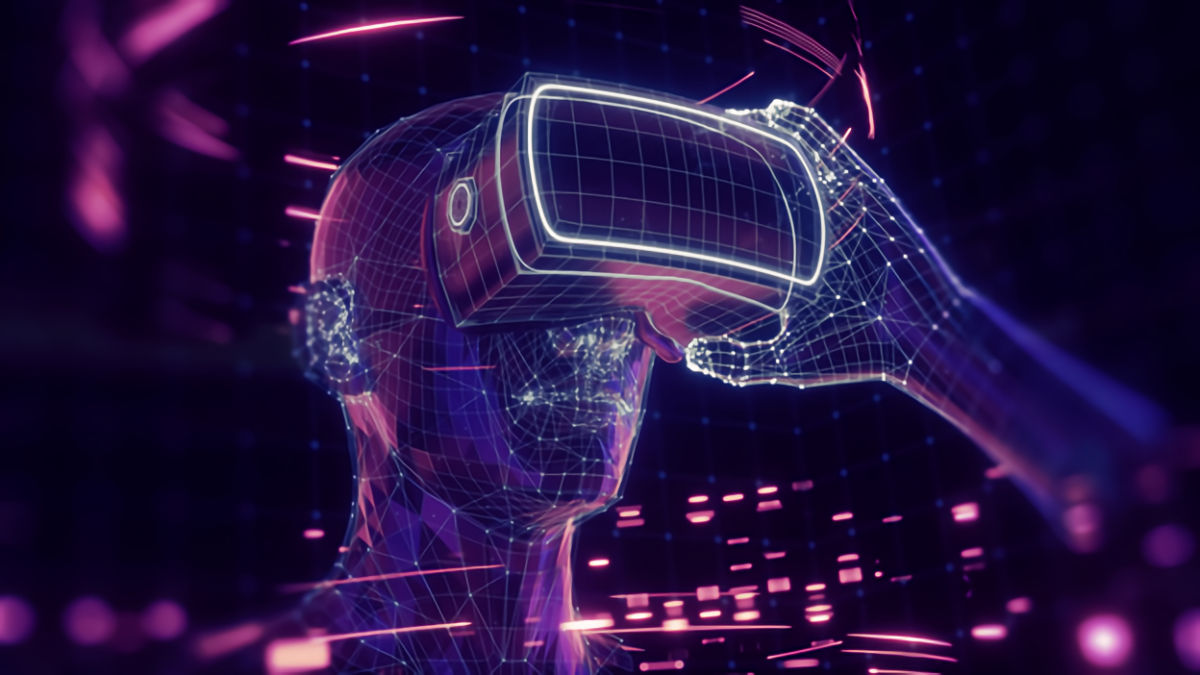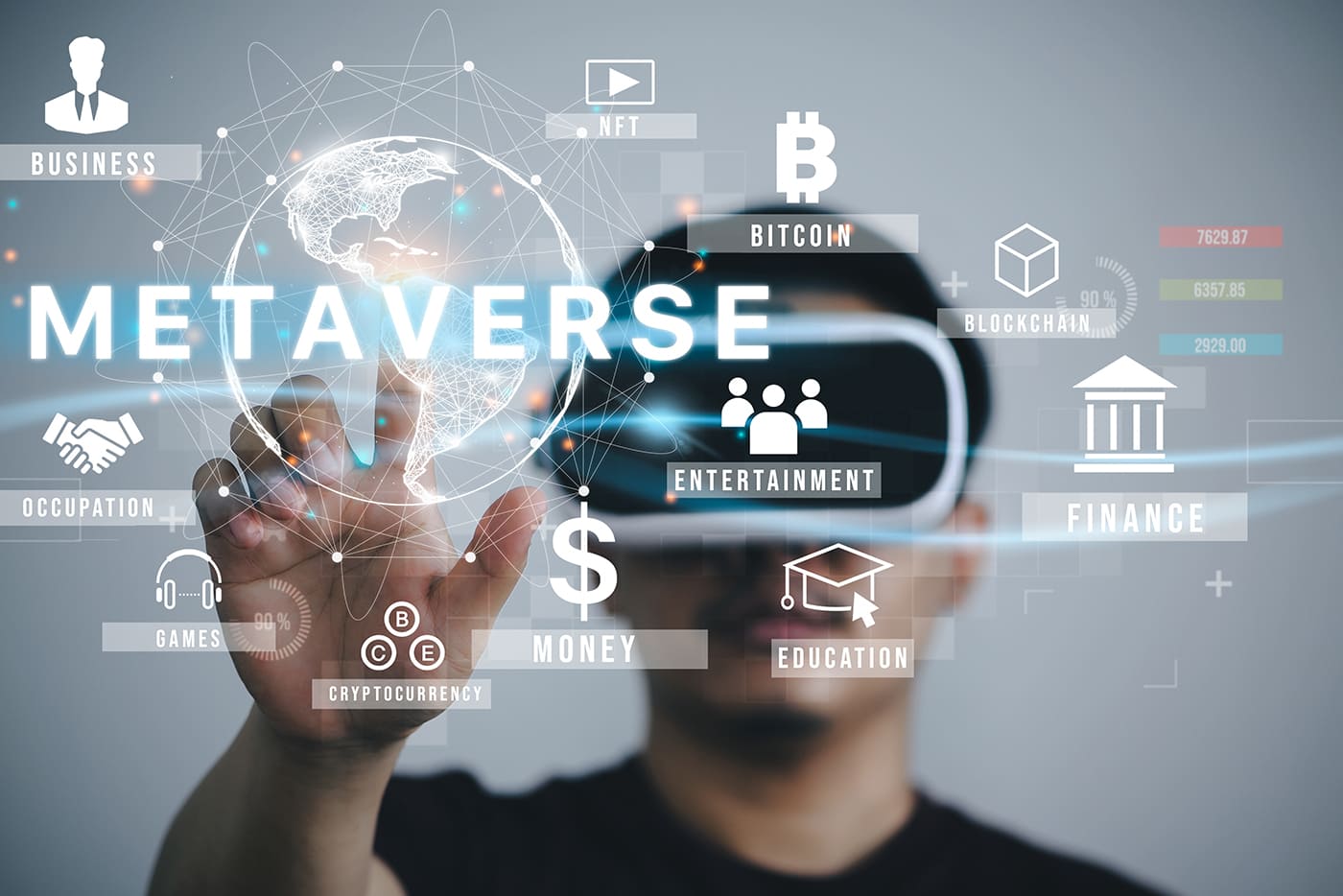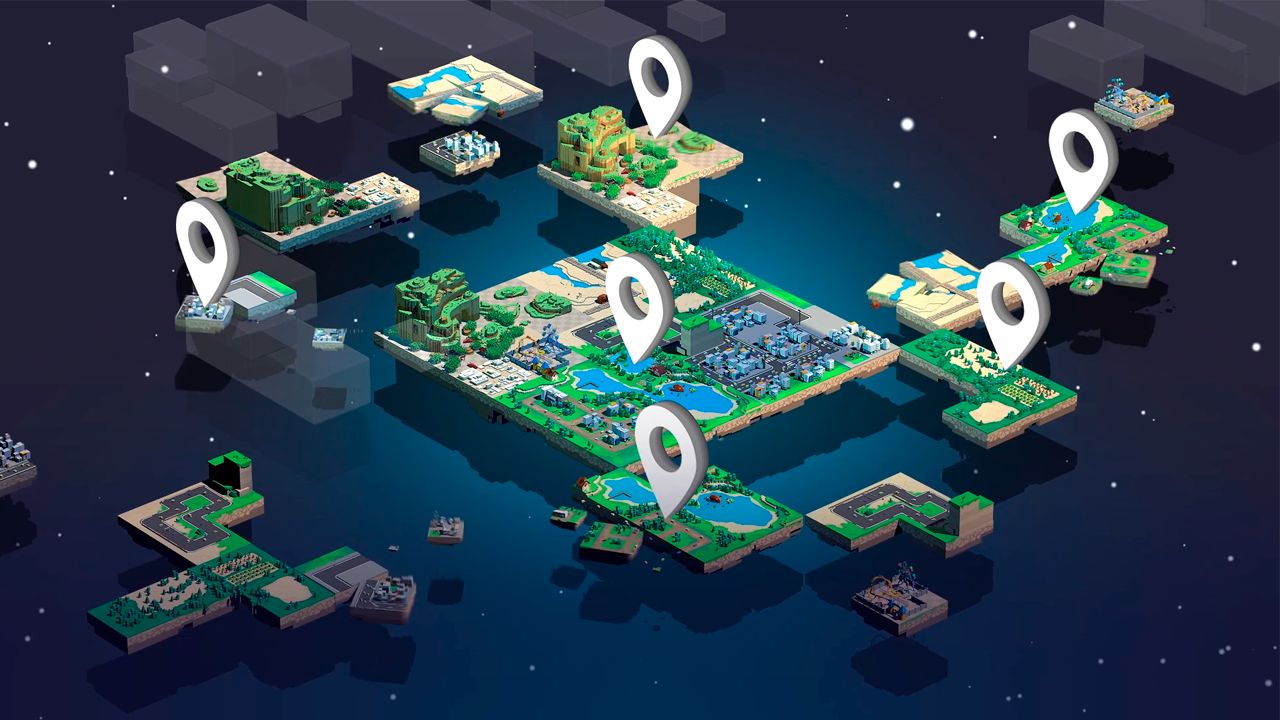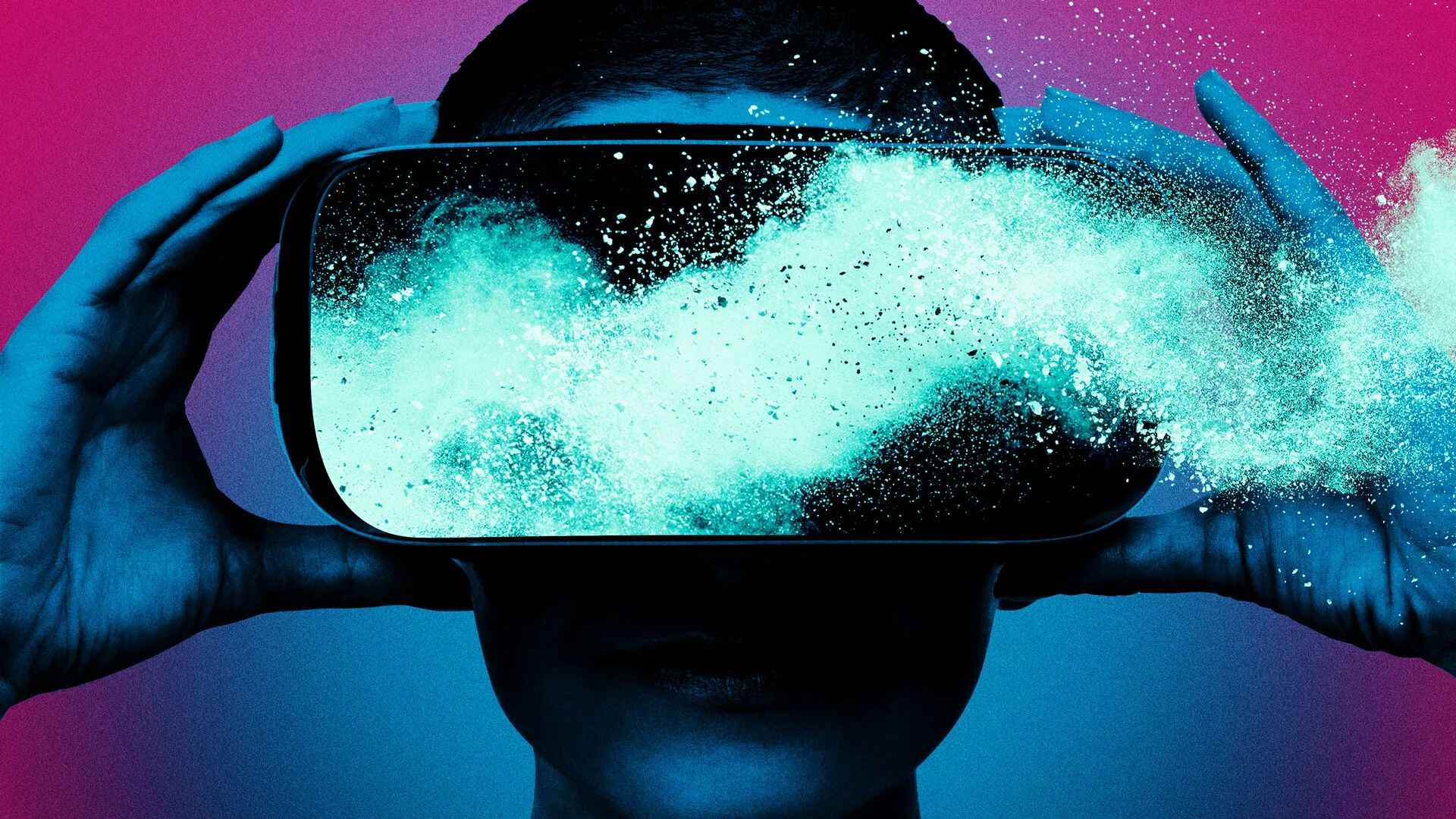Introduction
The concept of the Metaverse has gained significant attention in recent years. With its promise of a virtual world where people can work, play, and interact with one another, many individuals and organizations are contributing to its creation. The Metaverse is envisioned as a fully immersive, interconnected virtual reality experience, where users can explore, socialize, and engage in various activities.
While the idea of the Metaverse may have originated from science fiction novels and movies, the reality of its development is being driven by a multitude of players. From big tech companies to startups, cryptocurrency companies to gaming giants, a wide range of organizations and individuals are actively involved in shaping the future of the Metaverse.
In this article, we will explore the key players who are driving the creation of the Metaverse. From established industry leaders to innovative startups, from developers and programmers to artists and designers, let’s delve into the diverse ecosystem of contributors who are shaping the Metaverse’s development.
It is important to note that the Metaverse is an evolving concept, and its creation involves collaboration and contributions from various sectors. This article aims to provide a broad overview of the key players involved and does not cover every individual or organization contributing to the Metaverse’s development. With that in mind, let’s dive into the world of the Metaverse and explore the entities shaping its existence.
Big Tech Companies
Big tech companies play a crucial role in the creation of the Metaverse due to their vast resources, technological expertise, and global reach. These industry giants are at the forefront of developing and integrating technologies that power the virtual world. Companies like Facebook, Google, Amazon, and Microsoft are investing heavily in virtual reality (VR) and augmented reality (AR) technologies, which are essential components of the Metaverse.
Facebook, through its subsidiary Oculus, has been a major contributor to the advancement of VR technology. They have developed the Oculus Rift and Quest headsets, providing users with immersive virtual experiences. Facebook’s Horizon platform is aimed at creating a social Metaverse, where users can interact in virtual spaces and communities.
Google has also made significant strides in the development of the Metaverse. With its AR platform, Google Lens, and investment in virtual reality startups, Google aims to bridge the gap between the real and virtual worlds. Their ARCore platform provides developers with tools to create augmented reality experiences, integrating digital content seamlessly into the real world.
Amazon has been exploring virtual and augmented reality technologies in various ways. With their acquisition of the game-streaming platform Twitch, Amazon is positioning itself as a leader in the gaming sector of the Metaverse. Additionally, they are exploring the integration of AR and VR technologies into their e-commerce platform, allowing customers to visualize products in virtual spaces.
Microsoft’s HoloLens and Windows Mixed Reality platform have been instrumental in advancing augmented reality experiences. With their commitment to mixed reality technologies, Microsoft aims to create a more immersive and interactive Metaverse. They have also partnered with other companies and universities to explore the potential of holographic technologies.
These big tech companies not only contribute to the infrastructure and hardware development of the Metaverse but also play a significant role in creating the platforms and software that enable users to access and engage with the virtual world. Their investments and advancements in VR and AR technologies are driving innovation and pushing the boundaries of what is possible in the Metaverse.
While big tech companies have the resources and capabilities to drive the development of the Metaverse, it is important to consider the involvement of startups and small companies who bring fresh ideas and innovative solutions to the table. In the following section, we will explore the contributions of these smaller entities in shaping the Metaverse.
Startups and Small Companies
In addition to big tech companies, startups and small companies are playing a vital role in the creation of the Metaverse. These agile and innovative companies contribute fresh ideas, novel technologies, and unique perspectives to the virtual world.
Startups focused on virtual reality and augmented reality technologies are developing groundbreaking solutions that push the boundaries of what is possible in the Metaverse. Companies like Magic Leap, Spatial, and Niantic have made significant strides in creating immersive experiences that blur the line between the real and virtual worlds.
Magic Leap, for example, has developed the Magic Leap One, a mixed reality headset that combines virtual and augmented reality. Their technology enables users to see and interact with digital content in the real world, opening up new possibilities for the Metaverse. Spatial, on the other hand, specializes in virtual collaboration tools that enable users to work together in virtual spaces, fostering creativity and productivity in the virtual realm.
Niantic, known for its popular augmented reality game “Pokémon GO,” has also been exploring ways to bring augmented reality to the Metaverse. Their AR technology allows users to interact with virtual creatures and objects in the real world, creating immersive and interactive experiences.
Furthermore, small companies are making significant contributions to the Metaverse in areas such as virtual commerce, virtual real estate, and content creation. Companies like Decentraland, Cryptovoxels, and Somnium Space are building virtual worlds where users can buy, sell, and trade virtual assets, including land, artwork, and virtual goods. These virtual economies have the potential to revolutionize how we perceive and interact with digital assets within the Metaverse.
Content creators, such as 3D artists and game developers, also play a crucial role in shaping the Metaverse. Companies like Sketchfab and Unity Technologies provide platforms and tools that empower creators to design and build immersive virtual experiences. These platforms allow creators to showcase their work, collaborate with others, and monetize their creations, driving the growth and diversity of content within the Metaverse.
Startups and small companies bring fresh perspectives, nimble approaches, and disruptive ideas to the development of the Metaverse. Their contributions in technology, experiences, and economies are essential in shaping a dynamic and inclusive virtual world.
Now that we have explored the role of startups and small companies, let’s delve into the contributions of cryptocurrency and blockchain companies in the creation of the Metaverse.
Cryptocurrency and Blockchain Companies
Cryptocurrency and blockchain technology have become an integral part of the Metaverse, offering new opportunities for virtual economies, digital ownership, and secure transactions. Cryptocurrency companies and blockchain platforms are playing a significant role in shaping the financial infrastructure of the virtual world.
One notable cryptocurrency in the Metaverse is Ethereum, with its ability to support smart contracts and decentralized applications (DApps). Ethereum allows for the creation of virtual assets and digital currencies within the Metaverse, enabling users to buy, sell, and trade digital goods securely and efficiently.
Companies like Decentraland and Somnium Space leverage blockchain technology to establish decentralized virtual worlds. These platforms allow users to own virtual land and assets through blockchain-based ownership records, creating a transparent and immutable record of ownership. Users can buy, sell, and trade virtual assets using cryptocurrencies, facilitating a thriving digital economy within the Metaverse.
Enjin, another blockchain-based platform, enables the creation and integration of non-fungible tokens (NFTs) within the Metaverse. NFTs are unique digital assets that can represent virtual goods, artworks, or collectibles. These assets can be bought, sold, and traded, providing creators and users with a new way to monetize and showcase their digital creations.
Furthermore, cryptocurrency exchange platforms like Binance and Coinbase provide liquidity and accessibility to users looking to acquire and trade cryptocurrencies for Metaverse use. These platforms bridge the gap between traditional finance and the virtual economy, making it easier for users to participate and engage in the Metaverse ecosystem.
Blockchain technology also ensures the security, transparency, and integrity of transactions and ownership records within the Metaverse. The decentralized nature of blockchain removes the need for intermediaries, reducing transaction costs and providing users with greater control over their virtual assets.
Overall, cryptocurrency and blockchain companies are driving the development of the financial infrastructure within the Metaverse. By enabling secure transactions, transparent ownership, and decentralized economies, these entities are shaping the future of virtual finance and empowering users to fully participate in the digital world.
Now, let’s explore the contributions of gaming companies to the creation of the Metaverse.
Gaming Companies
Gaming companies have long been at the forefront of creating immersive virtual worlds, making them key contributors to the development of the Metaverse. With their expertise in creating captivating and interactive experiences, these companies are shaping the entertainment and social aspects of the virtual realm.
Industry giants like Epic Games, Roblox Corporation, and Blizzard Entertainment have been instrumental in pushing the boundaries of virtual experiences. Epic Games’ Unreal Engine and Fortnite have revolutionized game development and introduced millions of players to immersive virtual worlds. The company has also recently ventured into virtual concerts and events, showcasing the potential for entertainment within the Metaverse.
Roblox Corporation has built a user-generated content platform that allows players to create, share, and monetize their own virtual experiences. With over millions of user-created games and experiences, Roblox has created a thriving ecosystem within the Metaverse, fostering creativity and social interactions.
Blizzard Entertainment, known for popular games like World of Warcraft and Overwatch, has also made significant contributions to the virtual world. World of Warcraft, in particular, has served as a prime example of a persistent virtual world where players can explore, interact, and engage in social activities. These game worlds have laid the foundation for the immersive and interconnected Metaverse that many envision.
Other gaming companies such as Ubisoft, Electronic Arts, and Sony Interactive Entertainment are also exploring the potential of the Metaverse. These companies bring their vast resources, intellectual properties, and gaming expertise to create virtual experiences that blur the line between games and virtual social spaces.
Gaming companies play a crucial role in the development of the Metaverse by providing the platforms, technologies, and experiences that drive user engagement and entertainment. By creating virtual worlds that are rich in content, interactive gameplay, and social connectivity, these companies are building the foundation for the immersive and interconnected virtual reality experience of the Metaverse.
As we explore the creation of the Metaverse, it is important to acknowledge the contributions of developers and programmers. Let’s explore their role in the next section.
Developers and Programmers
Developers and programmers are the backbone of the Metaverse, responsible for building the digital infrastructure, creating immersive experiences, and enabling the functionalities that make the virtual world come to life. Their technical expertise and creativity are essential in shaping the development and user experience of the Metaverse.
With their knowledge of programming languages and frameworks, developers are responsible for creating the software and applications that power the virtual world. They build the interfaces, design the interactive elements, and handle the backend systems that enable users to navigate and interact within the Metaverse.
Developers and programmers also play a crucial role in implementing emerging technologies like virtual reality (VR) and augmented reality (AR) into the Metaverse. They create the frameworks and tools necessary for developers and content creators to build immersive virtual experiences. Moreover, they integrate functionalities like motion tracking, spatial audio, and haptic feedback to enhance the realism and immersion of the Metaverse.
The collaboration between developers and designers is essential in creating visually captivating and user-friendly virtual experiences. User interface (UI) and user experience (UX) designers work hand in hand with developers to ensure that users can easily navigate virtual environments, interact with objects, and communicate with others within the Metaverse.
Open-source communities and developer ecosystems also contribute greatly to the development of the Metaverse. Platforms like Unity, Unreal Engine, and Web3 frameworks provide developers with the tools, resources, and libraries to build Metaverse applications. These communities foster collaboration, knowledge sharing, and innovation among developers, driving the advancement of the Metaverse technology stack.
Moreover, developers and programmers are continuously exploring and implementing new technologies to enhance the capabilities of the Metaverse. Machine learning, artificial intelligence, and blockchain are just a few examples of emerging technologies that are being integrated into virtual experiences, enabling dynamic and personalized interactions within the Metaverse.
The skill and expertise of developers and programmers are instrumental in shaping the functionalities, user experiences, and advancement of the Metaverse. They are the driving force behind the creation and evolution of the virtual world, turning abstract concepts into immersive and interactive realities.
Now that we have explored the role of developers and programmers, let’s delve into the contributions of artists and designers in the creation of the Metaverse.
Artists and Designers
Artists and designers play a pivotal role in the creation of the Metaverse, bringing creative vision, aesthetics, and immersive experiences to virtual worlds. Their artistic talents and expertise in various mediums shape the visual landscape, user interfaces, and overall ambiance of the virtual reality experience.
Artists specializing in 3D modeling, digital sculpting, and animation create the virtual objects, characters, and environments that populate the Metaverse. They use their artistic skills and technical knowledge to design lifelike avatars, intricate landscapes, and visually stunning assets that enhance the realism and immersion of the virtual world.
Designers focus on creating user interfaces (UI) and user experiences (UX) that are intuitive and engaging within the Metaverse. They consider factors such as user navigation, interaction design, and visual hierarchy to ensure that users can easily navigate virtual environments, interact with objects, and communicate with others in a seamless and immersive manner.
Furthermore, sound designers and composers contribute to the audio experience of the Metaverse. They create ambient soundscapes, background music, and interactive audio elements that enhance the immersion and emotional impact of virtual experiences. The use of spatial audio techniques adds depth and realism to the virtual environment, creating a more immersive and engaging audio experience for users.
Artists and designers also play a significant role in shaping the visual identity and branding of virtual experiences within the Metaverse. They collaborate with companies and creators to develop unique and recognizable aesthetics, creating a cohesive and appealing visual style that resonates with users.
As the Metaverse evolves, artists and designers are exploring new mediums and technologies to push the boundaries of creativity within the virtual realm. They experiment with virtual reality painting, generative art, and interactive installations, blurring the line between traditional art forms and digital creations.
Virtual galleries and digital art marketplaces enable artists to showcase and sell their work within the Metaverse, providing new opportunities for artists to thrive and reach a global audience. Blockchain technology also plays a role in ensuring authenticity and provenance of digital art, allowing artists to tokenize and trade their creations as non-fungible tokens (NFTs).
The contributions of artists and designers are essential in creating visually captivating, immersive, and emotionally resonant virtual experiences. Through their talents, skills, and technological innovation, they are shaping the aesthetic landscape and defining the artistic possibilities within the Metaverse.
Now, let’s explore the contributions of academics and researchers in the creation of the Metaverse.
Academics and Researchers
Academics and researchers play a vital role in the creation of the Metaverse through their exploration of new technologies, theoretical frameworks, and the social implications of virtual reality. Their expertise and insights contribute to shaping the development, ethics, and future possibilities of the virtual world.
Research institutions and universities are at the forefront of studying and developing technologies that underpin the Metaverse. Academics and researchers delve into areas such as computer graphics, virtual reality, human-computer interaction, and artificial intelligence, pushing the boundaries of what is possible in the virtual realm.
These researchers explore topics such as user experience, presence, embodiment, and social dynamics within virtual environments. Their work contributes to understanding how to create more immersive and engaging experiences, address user comfort and safety concerns, and design virtual interactions that mimic real-world social dynamics.
Furthermore, academics and researchers investigate the ethical implications of the Metaverse. They explore topics such as privacy, digital identity, consent, and the social impacts of virtual interactions. This research helps shape ethical guidelines and policies for the development and use of the Metaverse, ensuring that it is a safe and inclusive virtual space for users.
Collaborations between academia and industry drive technological advancement within the Metaverse. Universities and research institutions partner with companies to conduct joint research projects, develop innovative technologies, and explore new applications for virtual reality. This collaboration fosters knowledge exchange and accelerates the development of the virtual world.
Academics and researchers also contribute to the education and training of future professionals in the field of virtual reality and the Metaverse. They develop curricula, teach courses, and provide mentorship to students, equipping them with the skills and knowledge needed to shape the future of the virtual realm.
Additionally, academic conferences, journals, and interdisciplinary workshops provide platforms for the dissemination of research findings and the exchange of ideas among scholars and practitioners. These scholarly activities inspire innovation, foster collaboration, and drive the development of the Metaverse ecosystem.
Overall, academics and researchers are instrumental in advancing the understanding and development of the Metaverse. Their expertise, theoretical frameworks, and research findings shape the technological, ethical, and social aspects of the virtual world, paving the way for a more immersive, inclusive, and impactful Metaverse.
Now, let’s explore the contributions of government organizations in the creation of the Metaverse.
Government Organizations
Government organizations play a significant role in the creation of the Metaverse by providing regulations, policies, and support for its development. Their involvement helps ensure the responsible and sustainable growth of the virtual world and addresses potential legal and ethical challenges that may arise.
Government bodies such as the Federal Communications Commission (FCC) and regulatory agencies are responsible for overseeing the telecommunications infrastructure necessary for the Metaverse. They allocate radio spectrum, ensure fair competition, and establish guidelines for the deployment of broadband connectivity, enabling users to access the virtual world seamlessly.
Government organizations also contribute to the development of privacy and data protection laws that are applicable to the Metaverse. They establish frameworks to safeguard user data, ensure transparency in data collection and usage, and protect individuals’ rights within the virtual environment. These regulations aim to mitigate potential risks associated with privacy breaches and misuse of personal information within the Metaverse.
In addition, government agencies invest in research and development initiatives related to virtual reality and the Metaverse. They provide funding, grants, and support to academic institutions and private companies to explore new technologies, foster innovation, and develop applications that enhance the virtual reality experience. These investments help drive technological advancements and shape the future of the Metaverse.
Government organizations also contribute to the establishment of free speech and content regulations within the Metaverse. They work to ensure that user-generated content is protected by appropriate laws while addressing concerns related to potential harassment, hate speech, or illegal activities within virtual communities. Their efforts aim to create a safe and inclusive environment for all users.
Moreover, government organizations collaborate with industry stakeholders to establish interoperability standards and guidelines for the Metaverse. They engage in dialogues with technology companies, developers, and content creators to ensure that the virtual world is accessible and navigable for all users, regardless of their devices or platforms.
Through their regulations, investments, and collaborations, government organizations contribute to the responsible and sustainable development of the Metaverse. Their involvement helps shape the legal, ethical, and technical frameworks that govern interactions within the virtual world.
In the next section, we will explore the contributions of non-profit organizations in the creation of the Metaverse.
Non-profit Organizations
Non-profit organizations play a significant role in the creation of the Metaverse by advocating for accessibility, inclusion, and ethical practices within the virtual world. These organizations focus on public interest and work to ensure that the benefits of the Metaverse are accessible to all and that its development aligns with social values.
One area in which non-profit organizations contribute is digital inclusivity. They strive to bridge the digital divide by advocating for affordable and equitable access to the technology and infrastructure needed to participate in the Metaverse. These organizations work to ensure that underserved communities, marginalized populations, and individuals with disabilities have equal opportunities to access and engage in virtual experiences.
Non-profit organizations also promote digital literacy and digital citizenship within the Metaverse. They provide educational resources, workshops, and training programs to empower individuals with the knowledge and skills needed to navigate and make informed decisions within the virtual environment. These efforts help promote responsible behavior, digital safety, and informed participation within the Metaverse.
In addition, non-profit organizations are often advocates for the ethical use of technology and the protection of user rights within the virtual world. They engage in policy discussions, collaborate with industry stakeholders, and provide guidance on issues such as privacy, data protection, and content moderation. Their efforts help ensure that the Metaverse is a space that upholds ethical standards and respects the rights and well-being of its users.
Non-profit organizations also play a role in promoting sustainability and environmental consciousness within the Metaverse. They encourage the adoption of eco-friendly practices and advocate for the reduction of carbon emissions associated with server infrastructure and virtual operations. These initiatives aim to minimize the environmental impact of the virtual world and promote a sustainable approach to its development and usage.
Moreover, non-profit organizations engage in research, data collection, and awareness campaigns related to the social, economic, and cultural impacts of the Metaverse. They contribute valuable insights into the potential effects of virtual reality on society, including issues such as job displacement, societal inequalities, and the redefinition of social norms. These organizations bring important perspectives to inform public discourse and policy decision-making surrounding the Metaverse.
By focusing on public interest and advocating for accessibility, inclusivity, and ethical practices, non-profit organizations bring balance and social consciousness to the development of the Metaverse. Their contributions help shape the virtual world into a space that benefits society as a whole.
Now, let’s explore the contributions of individuals and influencers in the creation of the Metaverse.
Individuals and Influencers
Individuals and influencers play a significant role in the creation of the Metaverse by actively participating, promoting, and shaping the virtual world. Whether as users, content creators, or community leaders, their contributions influence the development and adoption of the Metaverse.
First and foremost, individuals are at the heart of the Metaverse as users and participants. Their engagement, feedback, and demands shape the direction and evolution of the virtual world. By actively exploring and interacting within the Metaverse, individuals provide valuable insights on user experiences, preferences, and needs, driving improvements and innovation within the virtual realm.
Content creators, including virtual influencers and social media personalities, contribute to the vibrancy and diversity of the Metaverse. These individuals leverage their creativity and storytelling skills to produce content that entertains, educates, and inspires others within the virtual world. They create virtual experiences, share knowledge, and build communities around shared interests, fostering engagement and connectedness within the Metaverse.
Influencers within the Metaverse hold significant influence over trends, preferences, and behaviors of its users. They have the ability to shape popular opinion and drive the adoption of new technologies and experiences. Through their engagement and advocacy, influencers amplify the reach and impact of the Metaverse, attracting new users and driving its growth.
Moreover, individuals contribute to the collaborative nature of the Metaverse by actively participating in co-creation and co-design. They contribute feedback, ideas, and suggestions that shape the development of virtual experiences and platforms. This collaborative interaction between individuals and developers fosters a sense of ownership and inclusivity within the virtual world.
Individuals also contribute to the economic aspect of the Metaverse by participating in virtual commerce and trade. They buy, sell, and trade virtual assets, digital goods, and services, driving the growth of the virtual economy. By participating in these economic activities, individuals contribute to the establishment of virtual marketplaces and economies within the Metaverse.
Furthermore, individuals have the power to advocate for ethical and responsible practices within the Metaverse. By promoting digital safety, respect, and inclusivity, individuals can create a positive and welcoming environment for all users. Their influence can help shape the social norms and standards that guide interactions and behavior within the virtual world.
Ultimately, the Metaverse relies on the actions and involvement of individuals. Their engagement, creativity, and influence help shape the development, adoption, and direction of the virtual world. As individuals continue to participate and engage within the Metaverse, its potential for enrichment and transformation becomes more apparent.
Now, let’s reflect on the diverse players we have explored and their collective contributions to the creation of the Metaverse.
Conclusion
The creation of the Metaverse is a collaborative effort involving a diverse range of players. From big tech companies to startups, cryptocurrency and blockchain companies to gaming giants, developers and programmers to artists and designers, academics and researchers to government organizations, non-profit organizations to individuals and influencers, each entity contributes their unique expertise and perspectives.
Big tech companies like Facebook, Google, Amazon, and Microsoft invest heavily in technologies such as virtual reality and augmented reality, providing the hardware, software, and platforms that power the Metaverse. Startups and small companies bring fresh ideas and innovative solutions, pushing the boundaries of what is possible in the virtual world. Cryptocurrency and blockchain companies enable secure transactions, digital ownership, and decentralized economies within the Metaverse. Gaming companies create immersive virtual experiences, blurring the line between games and social spaces. Developers and programmers build the infrastructure and bring virtual experiences to life through their technical skills. Artists and designers contribute to the visual aesthetics and user interfaces, enhancing the immersive qualities of the Metaverse. Academics and researchers explore new technologies, ethics, and the social impact of virtual realities. Government organizations provide regulations, policies, and infrastructure support, ensuring responsible and sustainable development. Non-profit organizations advocate for accessibility, inclusivity, and ethical practices within the virtual world. Individuals and influencers actively participate, create content, and shape the virtual community through their engagement.
The creation of the Metaverse is an ongoing and collaborative process. Each player’s contributions are crucial in shaping the future of the virtual world. As technology continues to advance, it will be exciting to see how the Metaverse evolves and how these diverse players continue to influence its growth.
Through the collective efforts of these players, the Metaverse has the potential to become a transformative and immersive reality, where people from all walks of life can work, play, and interact in a digital realm that mirrors and expands upon our physical world. The emergence of the Metaverse opens up endless possibilities for entertainment, education, communication, and economic opportunities. It has the potential to revolutionize industries, reshape social interactions, and redefine the way we experience and engage with digital content.
As the Metaverse continues to develop and expand, it is important to prioritize inclusivity, accessibility, and ethical practices to ensure that it remains a space that benefits everyone. Collaboration, innovation, and user-centric design will be key in creating a Metaverse that is truly immersive, inclusive, and enriching for all individuals.

























